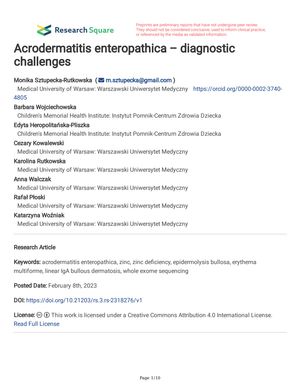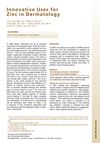Acrodermatitis Enteropathica – Diagnostic Challenges
February 2023
in “
Research Square (Research Square)
”

TLDR Genetic testing confirmed a rare skin disorder in a young girl, which improved with zinc supplementation.
A 16-month-old girl with an atypical case of acrodermatitis enteropathica was initially misdiagnosed with erythema multiforme and considered for epidermolysis bullosa due to blistering skin lesions that appeared post-infancy. Despite normal serum zinc levels, her severe symptoms, including erythematous plaques, paronychia, and alopecia, persisted until genetic testing identified a pathogenic mutation in the SCL39A4 gene, confirming acrodermatitis enteropathica. Remarkable improvement was observed after starting oral zinc supplementation. This case underscores the importance of comprehensive diagnostic approaches, including immunological, genetic, and biochemical tests, for children presenting with blisters and erythematous plaques to ensure timely and appropriate treatment, which is crucial for preventing serious long-term effects such as mental and physical retardation in metabolic disorders.

